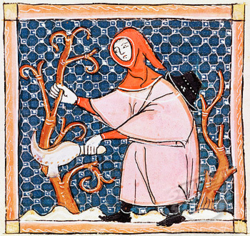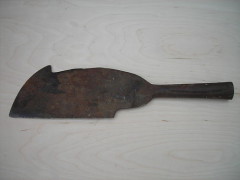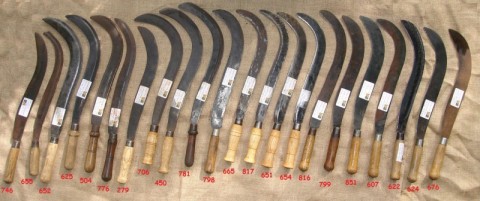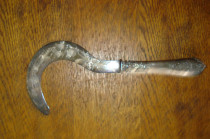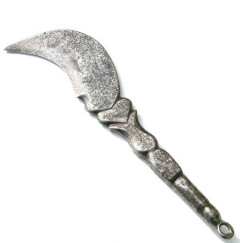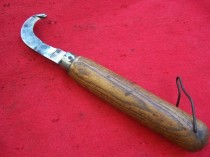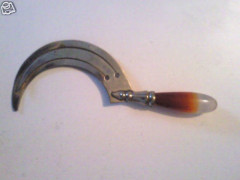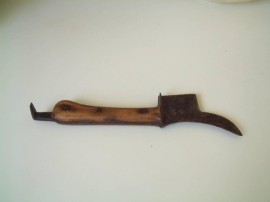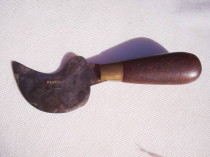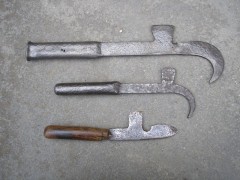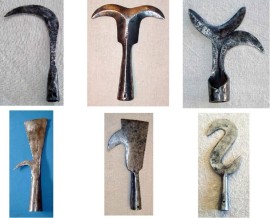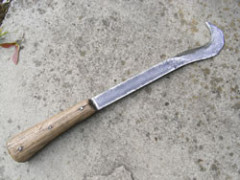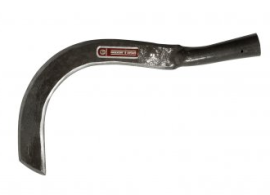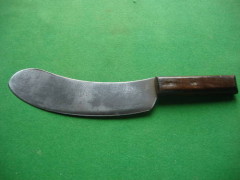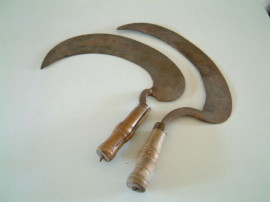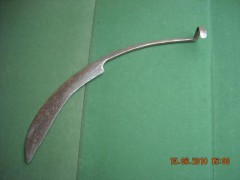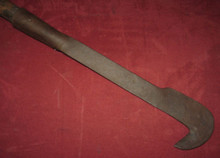When is it not a billhook????
Although billhook in shape some tools are strictly speaking not billhooks - but as edge tools they do come into the same general classification...
Although often sold a billhooks, and certainly a useful tool for cutting back light brushwood, these are pea and bean hooks, used to clear the haulm once the crop has been harvested. These are for sale from Glen Sibbick at Timeless Tools
The fabled golden sickle of druidic legend (see the Asterix comics) turns out to be really called a 'coupe gui' - a mistletoe cutter - is not usually sickle shaped and is made of iron and steel. From the collection of Jean Picot (known to his friends as 'la guignette' and founder of Outils-Anciens).
Like the above this is also an export tool: this time an Australian Fern Hook, similar to an English brush hook. Also supplied as a blade only for fitting with a locally made handle. This allowed more tools to be packed into a given space, and also avoided any import restrictions on timber products, and in some cases local taxes or duty.
This is a beet knife, a pattern often found in East Anglia. It has the Non Pariel 'Elephant' stamp of W Tyzack. Many regional variations of blade shape exist, some with a hook to pick up the beet to be trimmed. This shape is also common in Germany, possibly indicating a common ancestry. In France they are known a 'serpe à betterave' i.e. a. billhook for beet. In some areas it was also used for cutting cabbages, but a cabbage knife is a different tool altogether,
